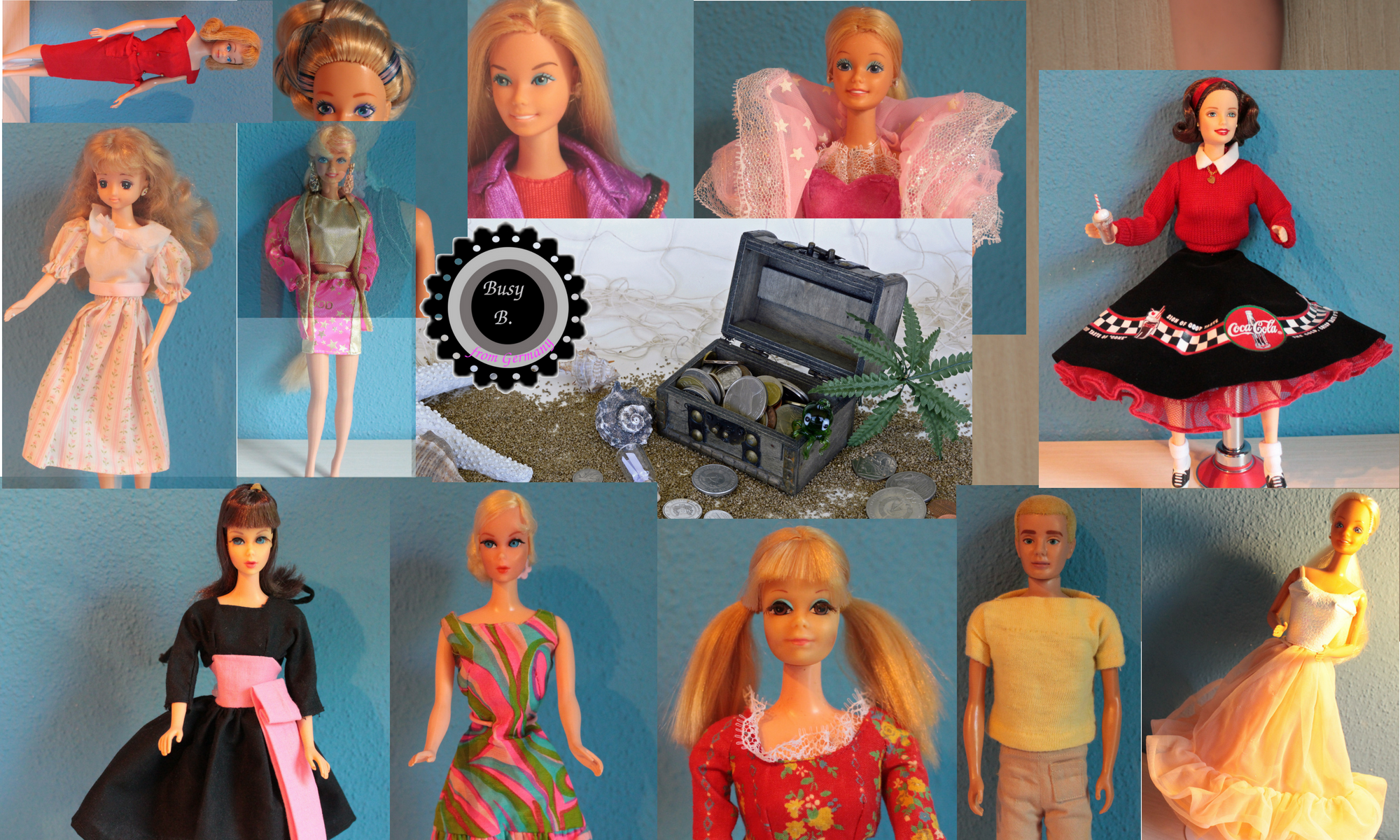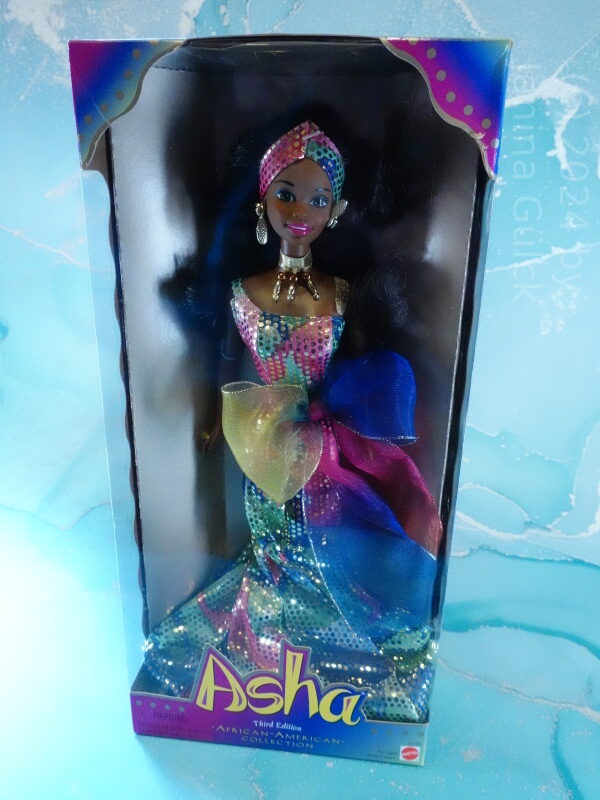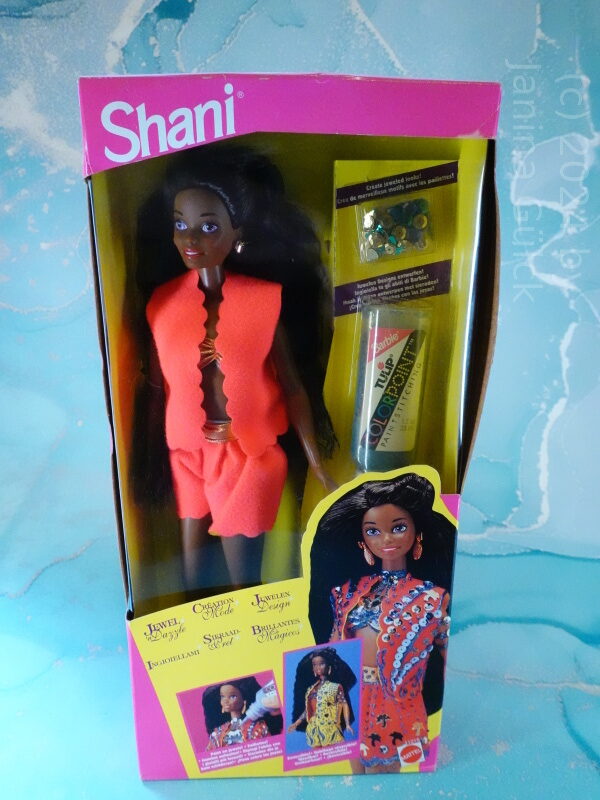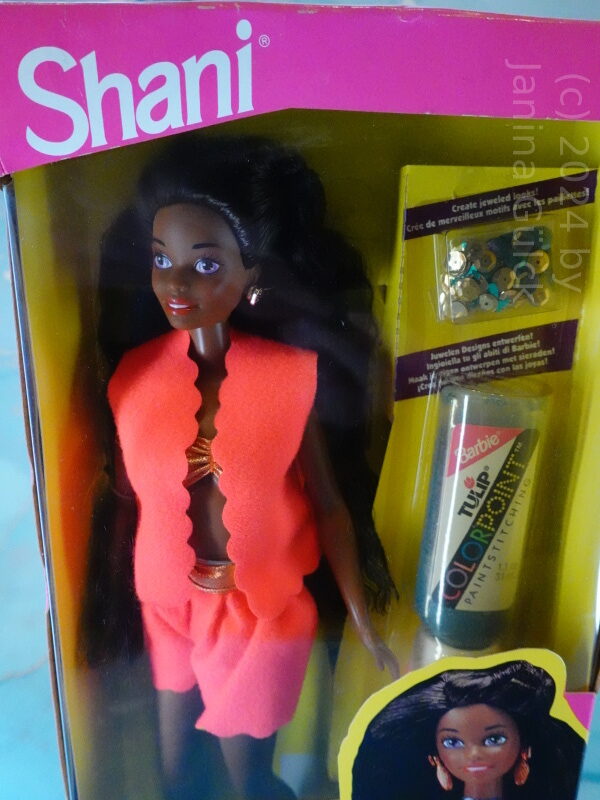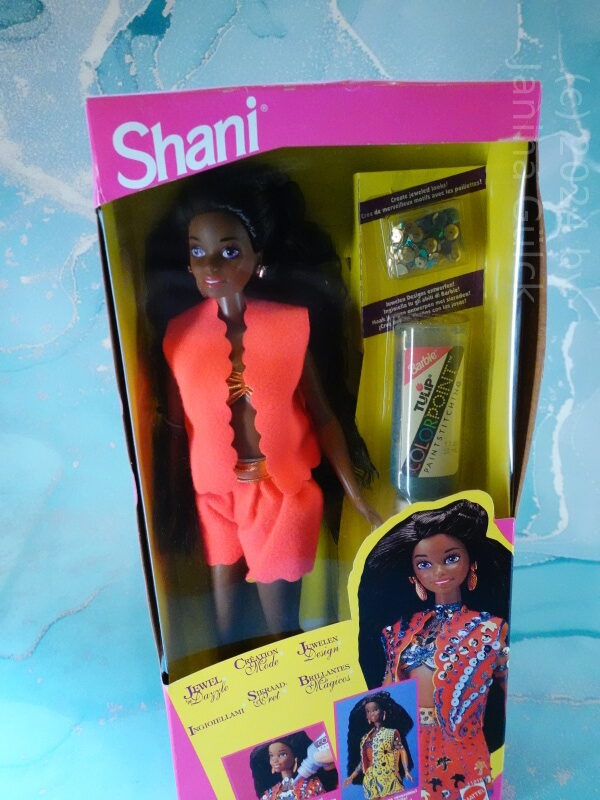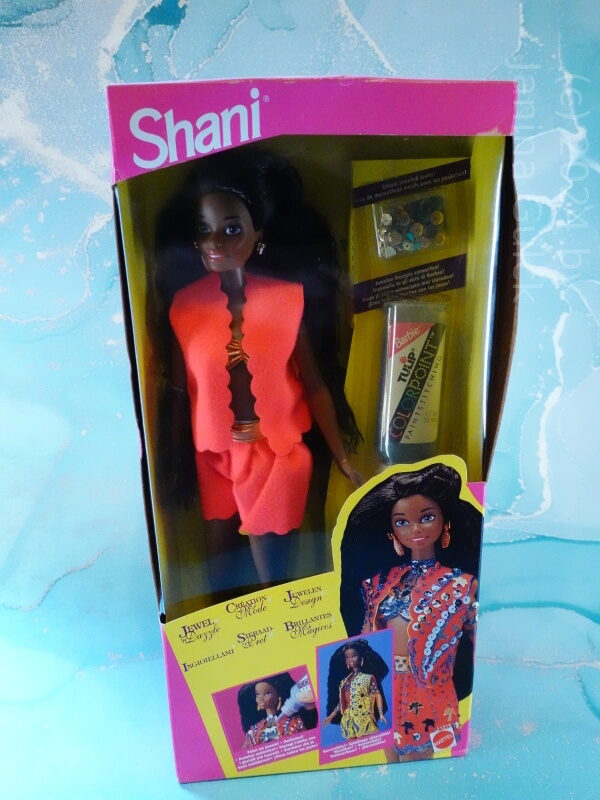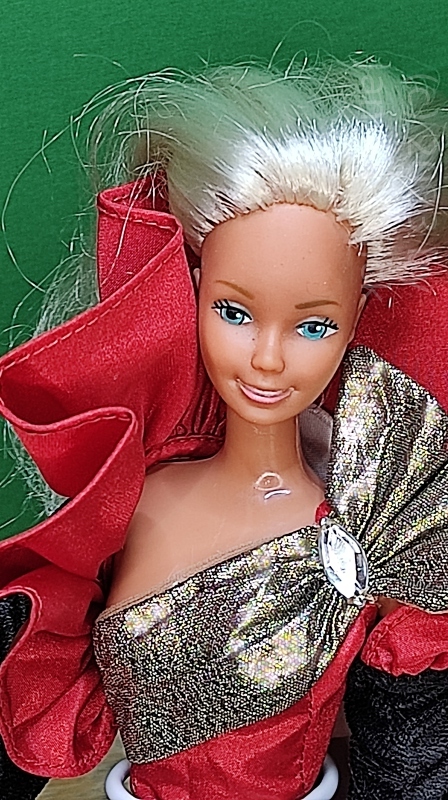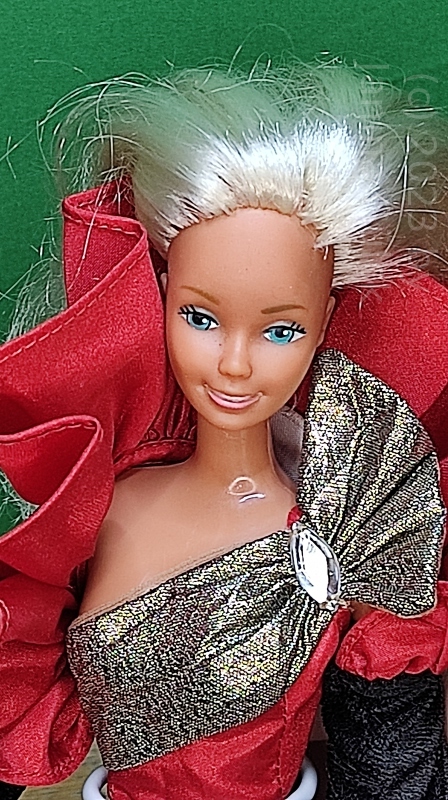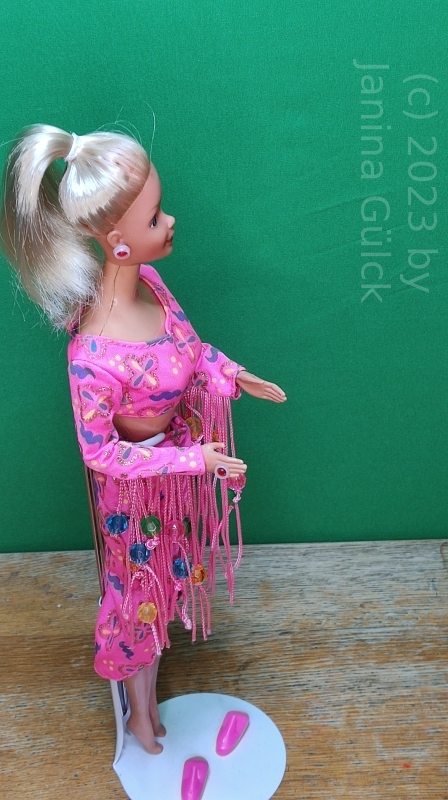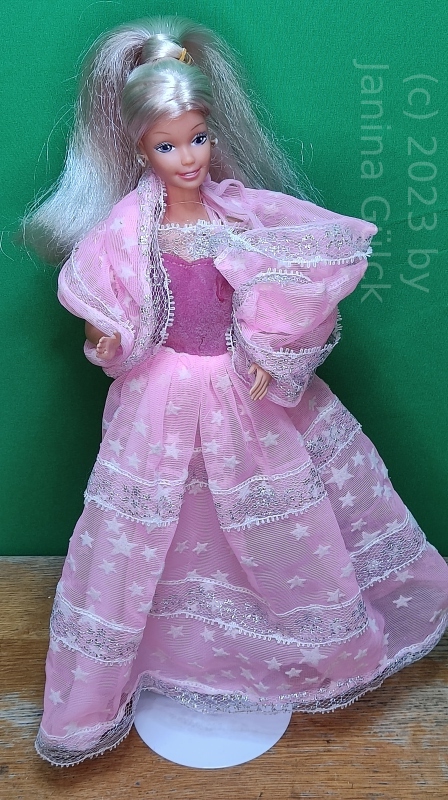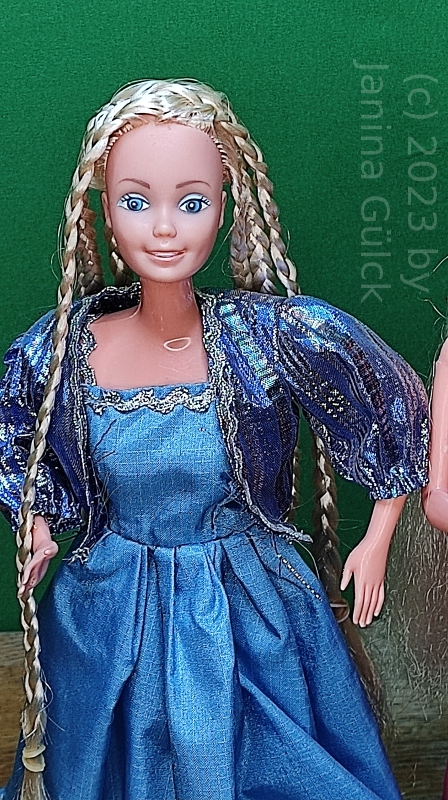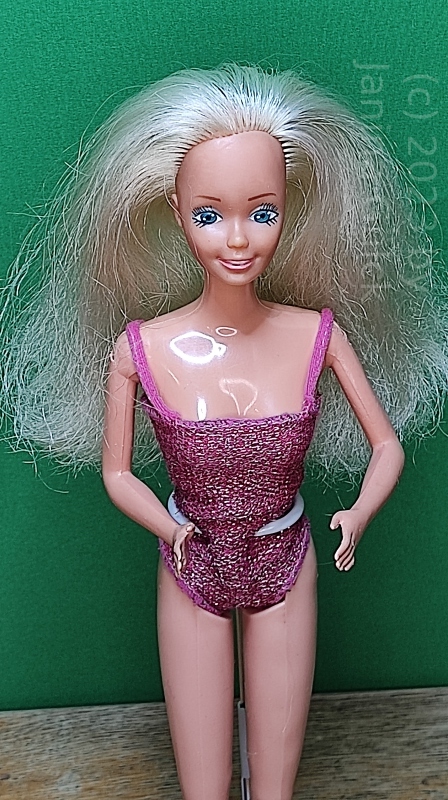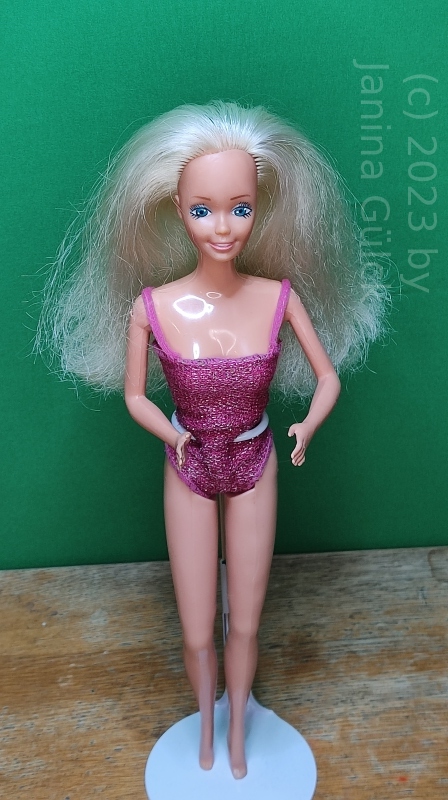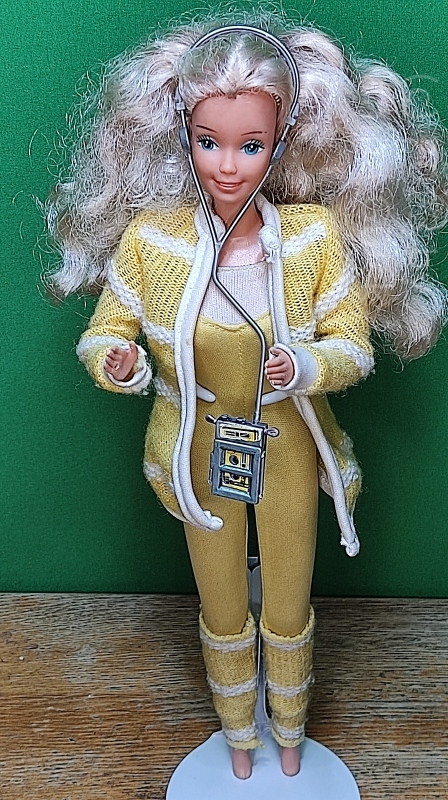Table of Contents
Since her debut in 1959, Barbie has transcended her origins to become a global cultural icon. Her journey from a single product launch in the United States to a worldwide presence reflects not only the evolution of a toy but also the dynamics of globalization, manufacturing shifts, and cultural adaptation.
1959: The Birth of Barbie in Japan /Barbie’s global history begins
Barbie was introduced by Mattel in 1959 at the American International Toy Fair in New York City. Contrary to the common perception of Barbie as an “all-American” doll, the first Barbies were manufactured entirely in Japan. Japanese artisans and housewives hand-painted the dolls at first, and the clothing was meticulously stitched, reflecting the high craftsmanship of the time. This production choice was influenced by post-World War II economic conditions, where Japan offered skilled labor at lower costs.


1960s: Expansion into Europe and Asia
In the early 1960s, Barbie’s popularity surged, leading to her introduction in various international markets. Mattel expanded Barbie’s availability to several European countries, including Germany, France, the United Kingdom, and Italy. Simultaneously, Japan not only continued as a manufacturing hub but also became a significant market for Barbie dolls. However this changed in the late 1960s and Licca ( a Francie type of doll) became more popular so that Mattel stopped to market Barbie directly. In the 1970s, 1980s and 1990s we see several joint ventures with Mattel like MaBa (Mattel- Bandai) and other Japanese toy manufacturers in the 1980s.
During the 1960s, Barbie’s wardrobe evolved to reflect contemporary fashion trends. Influences from figures like Jacqueline Kennedy and the Mod styles of London’s Carnaby Street were evident in Barbie’s clothing, showcasing her adaptability to global fashion sensibilities .Wikipedia – Die freie Enzyklopädie


1970s: Shifting Production to East Asia
As global demand for Barbie increased, Mattel began relocating production to other parts of East Asia to capitalize on lower labor costs. Manufacturing facilities were established in countries like Hong Kong, Taiwan, and later in the 1980s in China. This strategic move allowed Mattel to scale production efficiently while maintaining affordability for consumers worldwide .Los Angeles Times
During this period, Barbie’s presence expanded further into Asian markets, with localized versions and marketing strategies tailored to regional preferences. Mexico also became a growing market after the devastating start with a burnt down production plant that destroyed the Talking Barbie Christmas production in 1969 and several of the original molds. CIPSA started to produce for the Mexican market itself as one of the first companies to produce under license for Mattel. It is unknown how many dolls were produced under this first company, but it must have been a lot.
After the end of Franco in Spain we see Congost as a second company that produces under license for the Spanish market. In the Philippines we have at least a normal production established, but I can’t say if it was already the co-operation with Richwell that we see later for the delivery of the local market.
In the late 1970s Japan becomes too expensive a production country due to rising costs in production and labor. The oil crisis in the 1970s might have accelerated this.
From my own collection I can tell you that one of the Supersize Barbie dolls was produced in Western Germany. I also heard about a short term production in France.
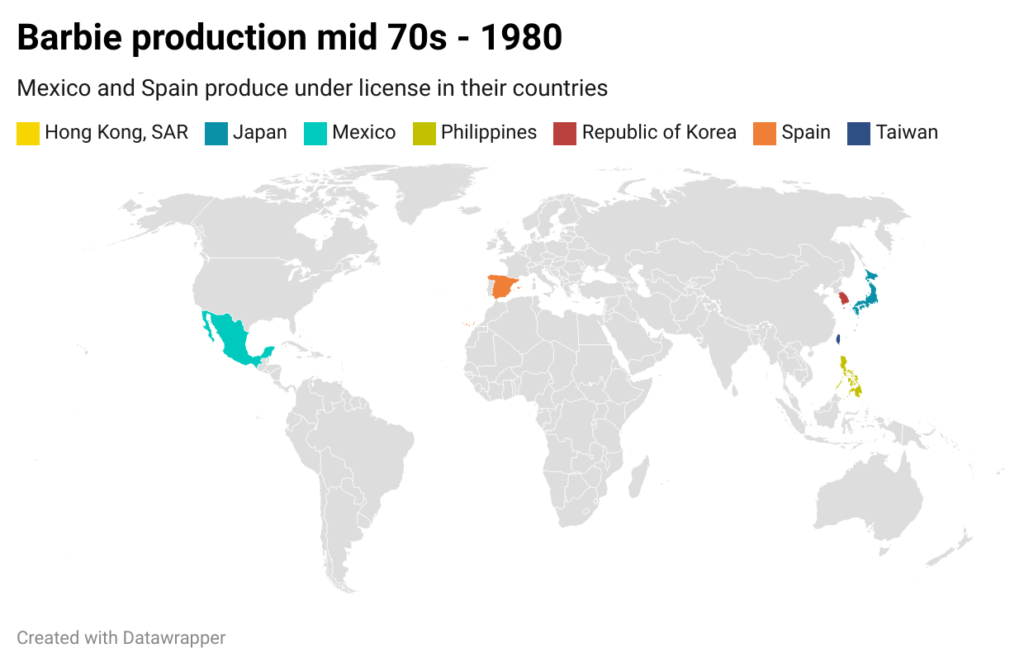
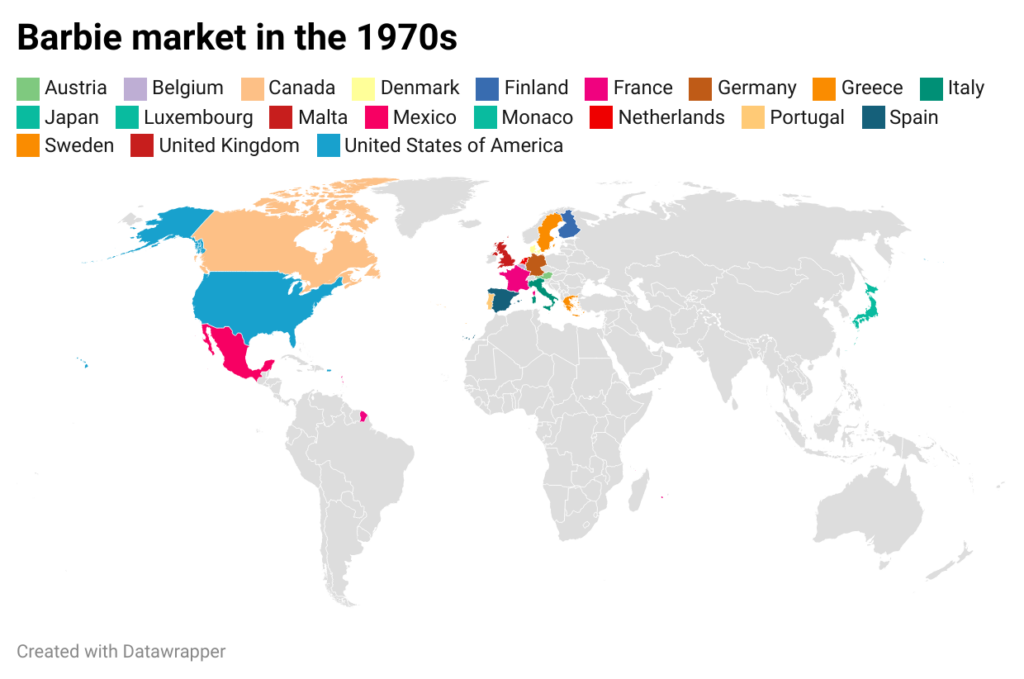
1980s: Localization and Licensing in Emerging Markets
The 1980s marked a significant phase in Barbie’s globalization, characterized by localized production and licensing agreements in emerging markets. Mattel collaborated with local companies to manufacture and distribute Barbie dolls, allowing for cultural customization and increased market penetration. The countries mentioned in this paragraph all have produced under license. Spain is not mentioned here but produced under license as well until 1994.
Philippines
Mattel operated factories in the Philippines, employing thousands of workers. However, in 1988, after labor disputes, Mattel closed two factories that employed 4,000 workers .Los Angeles Times
Mexico
In Mexico, companies like CIPSA and later Aurimat were licensed to produce Barbie dolls. These locally manufactured dolls often featured unique characteristics, such as different makeup styles and exclusive friends like “Valerie,” reflecting Mexican cultural elements. I can tell you from my own experience that the quality of Mexican Barbie dolls is different. I have one Animal Lovin Barbie whose head is very pale but she’s the only pale head from Mexico that I have. BarbiePedia+1BarbiePedia+1
Brazil
Brazilian company Estrela produced Barbie dolls with distinctive features, including elaborate makeup and unique outfits. Exclusive models like “Barbie Passeio” and “Barbie Ciclista” were only available in Brazil, showcasing localized creativity. I found out about the Brazilian market that Barbie from Estrela was produced from 1982 until 1996. BarbiePedia+1BarbiePedia+1BarbiePedia+1BarbiePedia+1
Venezuela
Rotoplast, based in San Felipe, Yaracuy State, manufactured Barbie dolls under Mattel’s license between 1984 and 1994. These dolls were distributed in Venezuela and exported to neighboring countries like Colombia .BarbiePedia
Argentina
Top Toys in Argentina produced Barbie dolls with localized features, including a version of Ken named “Kenny.” Unique editions like the “Happy Holidays Barbie” in Argentina featured different designs compared to their U.S. counterparts. I also heard about Antex as producer for late Barbie dolls from Argentina. BarbiePedia+1BarbiePedia+1BarbiePedia+1BarbiePedia+1
Peru
Peruvian company Basa manufactured Barbie dolls in the 1980s and 1990s, offering versions like “Superstar Barbie” and “Dream Glow Barbie.” These dolls often had subtle differences in design and packaging, catering to local tastes. They are really hard to find, and the early dolls have an orange skin tone. BarbiePedia+1BarbiePedia+1
Chile
From another collector, I learned that there was at least one doll produced for the market in Chile. I have seen only this one doll until now.
Colombia
In Colombia other collectors told me Dibon produced at least 4 dolls for the local market. I heard at least that Island Fun Barbie, Costume Ball Barbie, Beach Blast Barbie, Totally Hair Barbie should have been produced for the market.
India
In India, Barbie dolls were produced to cater to the local market, featuring traditional attire and accessories. This localization strategy helped Barbie resonate with Indian consumers, blending global brand identity with regional cultural elements. I found information that the production started in 1986 and last until 2004. Most of the early dolls I saw from India are blonde.

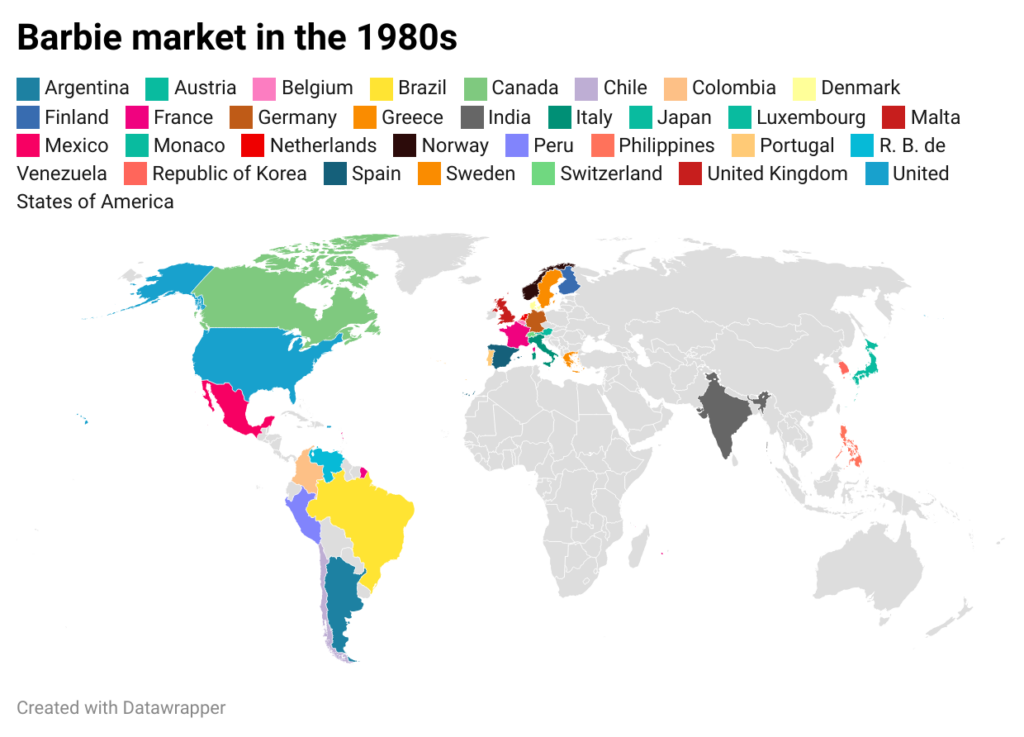
Conclusion
Barbie’s transformation from a single American doll to a global phenomenon illustrates the intricate interplay between globalization, cultural adaptation, and strategic manufacturing. Through localized production, licensing agreements, and cultural customization, Barbie has maintained her relevance and appeal across diverse markets for decades.
Please keep in mind that this is only a display of my knowledge today. I don’t think this is a full display because I don’t know everything and information about this topic is not easy to find.
In the 1990s the production under license stops and production capacity in China was so much expanded that the production became more global from China. The variations like we see them in the 1980s and 1990s from the license production disappear again.
Barbie global history, Barbie manufacturing, Barbie international markets, Barbie production Asia, Barbie localization, Barbie 1959, Barbie in Europe, Barbie in Latin America, Barbie in India.
